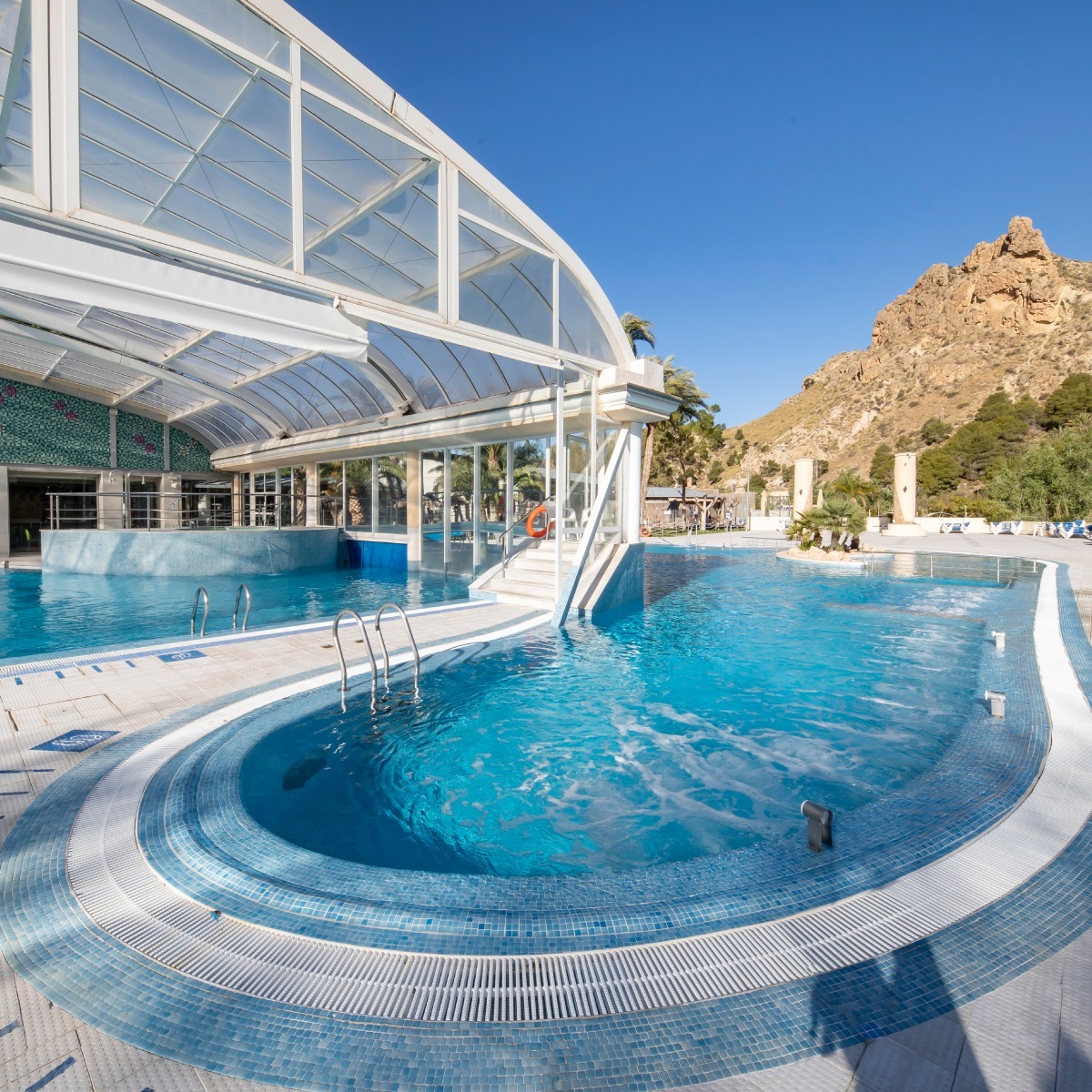Getaways 12 of the most beautiful towns in Spain to get lost in autumn
Nature The best campsites in Spain to live the bellowing of the deer
Eternal youth is more elusive, but if what we want is to plunge into therapeutic waters, disconnect from the daily frenzy and take a break this fall, these spas are the great thermal references.
Mondariz-Spa (Pontevedra)
Surrounded by a forest of pines and oaks, this town in the peaceful Tea Valley is the living history of Galician thermalism.
Isaac Peral, John Rockefeller II, Benito Pérez Galdós, Emilia Pardo Bazán
... No one resisted the mineral-medicinal waters and treatments at its Bath House, founded in 1873 by Dr. Enrique Peinador Vela, who managed to turn Mondariz into one of the essential thermal destinations in Europe at the end of the 19th century.
Archena Spa (Murcia)
The Segura river turns the
Ricote valley,
in Murcia, into a
prodigious orchard.
In this fertile oasis, still quite unknown, the Archena spa is hidden, already used in Roman times.
Its waters, with great healing powers, flow at a temperature of 52.5ºC.
Located in the Sanctuary of the Virgen de la Salud, the spa has modern facilities although there is still an atmosphere from the end of the 19th century.
Its mineral-medicinal water is an excellent natural remedy for physical conditions as well as for recovering the general well-being of the body.
Archena Spa.
Royal Spa of Las Caldas (Asturias)
With more than
two centuries of history
, Las Caldas is another pope of national thermalism, this time nestled in a century-old forest a few kilometers from Oviedo.
The origin and soul of the center is the old Casa de Baños from 1776, the work of the architect
Ventura Rodríguez
.
Today, several hotels have sprung up around it that combine comfort with well-being and the properties of the natural mineral-medicinal hot springs that flow from the spring.
One of the most desired corners is the column room of the Royal Spa: a floating pool that can be reserved privately.
Panticosa Spa Resort (Huesca)
We now travel to the heart of the Aragonese Pyrenees, an idyllic setting where the waters emerge from the earth at 53ºC.
Despite being 1,636 meters high, nothing has prevented Panticosa from becoming one of the most traditional thermal destinations.
They used it already in Roman times, although it is with the visit of personalities such as
Ortega y Gasset, Cánovas or Ramón y Cajal
, at the beginning of the last century, when the town explodes in popularity.
In recent years, a hotel restored by the architect Rafael Moneo and the creation of new and luxurious baths (of Tiberio) designed by Belén Moneo and Jeff Broca have added even more attractions to the spa.
Panticosa Spa.
Lanjarón Spa (Granada)
The healthy properties of the waters of Lanjarón have been known since the end of the 18th century, but it was in 1818 when they were declared of public utility and the fame of this town in Granada, natural gateway to the Alpujarra, grew.
We are facing the most frequented spa in Andalusia, the place that a report from the World Health Organization called one of the corners with "longest life on the planet".
The town uses six springs with different mineral-medicinal properties to drink or submerge, depending on the treatment.
Virginia Woolf, Manuel de Falla and García Lorca
are among its famous visitors.
La Toja Spa (Pontevedra)
Dense virgin pine forests contrast with the Atlantic Ocean that surrounds the island of La Toja, a privileged setting to enjoy what is perhaps the most famous spa in Spain.
With more than a century of history, the Gran Hotel La Toja, now part of the Eurostars group, has served as a refuge for numerous European monarchs, celebrities and Nobel Prize winners, such as
Severo Ochoa and Gabriel García Márquez
.
Not forgetting the members of the Bilderberg Club, made up of the most powerful men on the planet.
The origin, however, is more pedestrian and often recounted: it was a donkey abandoned there to live out his last days, and instead of kicking the bucket, he recovered his health and energy.
The subterranean waters of the island had saved him.
Eurostars Gran Hotel La Toja.
Cestona Spa (Guipúzcoa)
And from a donkey to the dogs of the Marquis of San Millán who, also according to legend, recovered their health thanks to the properties of the mineral-medicinal waters of this town on the banks of the Urola River, close to Zumaia and 20 minutes from San Sebastián.
The Cestona spa has been in operation
since 1804
, coinciding with the time of the great spas of the 19th century, and also during the
Belle Epoque
it was one of those spas that managed to attract glamorous guests during the summer.
Vichy Catalan Spa (Gerona)
The first page of Vichy Catalán was written in 1881 by the naturopathic doctor
Modest Furest
when he bought the Caldes de Malavella spring after confirming its mineral-medicinal properties.
In 1904 he had already built the spa hotel: a neo-Mudejar style building, a jewel of modernism at the time.
He has surely tried to drink it, but in the thermal circuit the visitor is immersed in authentic Vichy Catalan water at 37ºC.
Valbuena Monastery (Valladolid)
The thermal route ends in the Ribera del Duero.
Nestled between centuries-old vineyards, in the town of San Esteban, the Castilla Termal Valbuena hotel is located in one of the best preserved
Cistercian monasteries
in Europe.
Its mineral-medicinal waters come from the capture of an aquifer 386 meters from the San Bernardo spring, from which the monks of the 12th century already took advantage of its waters to irrigate the vineyards.
They are waters indicated for digestive and metabolic treatments.
Also for slimming therapies and relieving stress peaks.
You can follow
El Mundo Viajes
on Facebook, Twitter and Instagram
Conforms to The Trust Project criteria
Know more
Tourism

